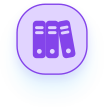








抱歉 🌳 ,我不确定你在问什么。请。尝试重新表 🐈 述您的问 🦁 题
6 月 🐯 份运输公司 🦆 安全生 🌸 产例会
时间 🦉 : [日期时 🌺 间 ☘ ],[]
地点: [会议室地 🌸 点]
主持人主 🦍 持人 🦁 : [姓 🐋 名]
与会人员:[与会 🐋 人 🦁 员 🐧 姓名]
议程:1. 开 🕊 场白
2. 上月 🌵 安全生产
事 🌺 故 🐬 统 🐦 计
安 🐧 全隐患排查治理情况
3. 6 月份 🌹 安 🐵 全生产重点工 🐋 作部署
车辆安全 🍀 检 🌵 查和维护 ☘
司 🐯 机安全教 🦊 育和培训
路 🦈 线安全 🌸 评 🐵 估和优化
4. 安全隐患排查治理任 🌲 务分配
各 🦁 部 🌺 门 ☘ 责任分工
排查 🐘 范围和 🐧 重点
5. 安全 🐳 生产 🌴 监督检查安排 🐴
时间 🦊 、地点和 🐞 人员安排
检查内 🦍 容 🐈 和要 🐟 求
6. 安全生 🦟 产应 🐈 急预案演 🦢 练
演练 🌳 场 🐅 景 🌵 和流程
应急物资储备 💐 和人 🐺 员培训 🦢
7. 安全生产宣传 🦊 教育
安全标语制 🦆 作和 🌿 张 🦄 贴
安 🌸 全知识普及 🐬 培训 🐺
8. 其 🐒 他 🐳 事项 🌵
9.1. 开 🐈 场白 🍀
主持人致开场白,欢迎与会人员并 🐞 说明会议目的。
2. 上月安全生 🌳 产
安全主管报告上月安全 🐴 生产情况,包括事故统计安全、隐患排查治理情况等。
3. 6 月份安全生产重点工作部署 🌳
车辆安 🌲 全检查和 🐅 维 🐳 护:制定检查和维护计划,确保车辆安全状况良好。
司机安全教育和培训:加强安全意识、驾驶技能和 🦢 应急处置能力的培训。
路线安全评估 🐛 和优化:对经常行驶路线进行安全评估优化路线,减少安全风险 🐈 。
4. 安全隐患排查治理 🌴 任务分配
各部门负责对本 🐬 部门负责的领域 🕷 进行安全隐患排查和治理 🐞 。
排查重点:车辆 🐳 安全 🌴 、司、机安全、路、线安全 🐈 操作安全环境安全等。
5. 安全生产监督检查 🐡 安排
安排定期 🐠 安全生产监督检查,覆盖所有部门和环节。
检查内容包括:车辆安全 🌷 、司、机安全行为 💐 安 🌼 全隐患排查治理情况等。
6. 安全生产应急预案 🦅 演练
组织 🐬 安全生产应急预案演练,模拟事 🐅 故场景并检验应急响应流 🐟 程。
确保应急物资储备充 🌺 足应急,人员 🐎 经过培训。
7. 安 🌳 全生产 🦊 宣传 🐳 教育
制作和张贴安全标 🐦 语,营造安全 🐳 生 🌷 产氛围。
组织安全知识培训,提高员工安全意识 🕷 和技能。
8. 其他 🌹 事 💮 项 🐞
讨论与 🦢 安全 🍁 生产相关的其他 🐡 事项,如新规定的出台、行业动态等。
9.主持人会议要点,强,调,安全生产的重要性要求与会人 🐅 员严格 🕊 落实安全生产措施确保安 🐅 全生产工作顺利开展。
.jpg)
Using technology in the classroom can have a number of benefits for students and teachers. Some of the most notable benefits include:
Increased student engagement: Technology can help to make learning more engaging and interactive for students. This can lead to increased motivation and participation in the classroom.
Improved student learning outcomes: Studies have shown that students who use technology in the classroom tend to have better learning outcomes than those who do not. This is likely due to the fact that technology can help students to learn more effectively and efficiently.
Greater access to learning resources: Technology can give students access to a wider range of learning resources, such as online simulations, videos, and tutorials. This can help students to learn at their own pace and in their own way.
Better communication between teachers and students: Technology can help to improve communication between teachers and students. This can be done through email, discussion boards, and other online tools.
Increased collaboration between students: Technology can help students to collaborate with each other on projects and assignments. This can lead to greater creativity and problemsolving skills.
Here are some specific examples of how technology can be used in the classroom:
Using interactive whiteboards or projectors to display lessons and activities
Streaming videos or animations to illustrate concepts
Using simulations to allow students to explore scientific phenomena
Using online games to practice math skills
Using chat rooms or discussion boards to facilitate student collaboration